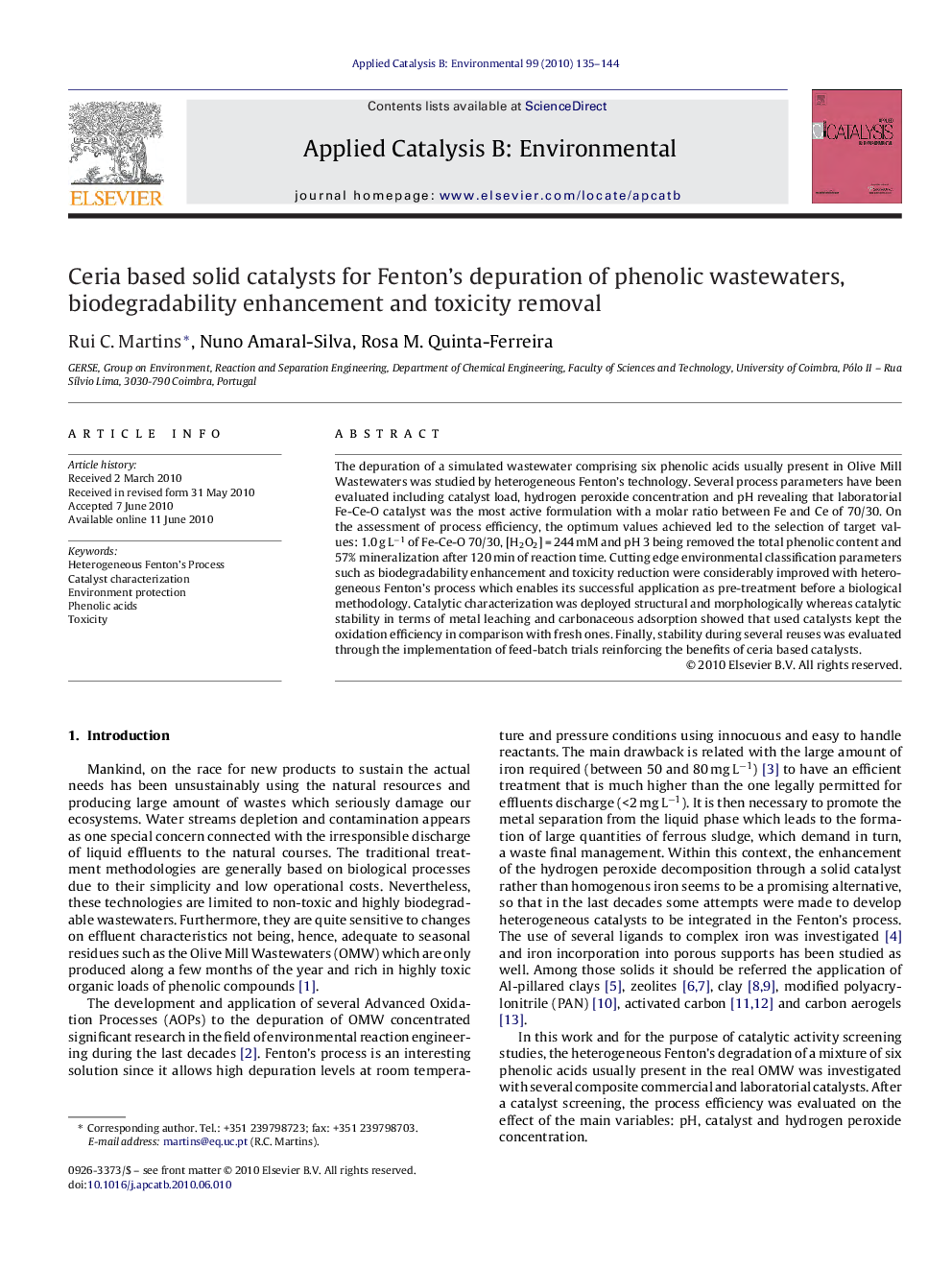| Article ID | Journal | Published Year | Pages | File Type |
|---|---|---|---|---|
| 47220 | Applied Catalysis B: Environmental | 2010 | 10 Pages |
The depuration of a simulated wastewater comprising six phenolic acids usually present in Olive Mill Wastewaters was studied by heterogeneous Fenton's technology. Several process parameters have been evaluated including catalyst load, hydrogen peroxide concentration and pH revealing that laboratorial Fe-Ce-O catalyst was the most active formulation with a molar ratio between Fe and Ce of 70/30. On the assessment of process efficiency, the optimum values achieved led to the selection of target values: 1.0 g L−1 of Fe-Ce-O 70/30, [H2O2] = 244 mM and pH 3 being removed the total phenolic content and 57% mineralization after 120 min of reaction time. Cutting edge environmental classification parameters such as biodegradability enhancement and toxicity reduction were considerably improved with heterogeneous Fenton's process which enables its successful application as pre-treatment before a biological methodology. Catalytic characterization was deployed structural and morphologically whereas catalytic stability in terms of metal leaching and carbonaceous adsorption showed that used catalysts kept the oxidation efficiency in comparison with fresh ones. Finally, stability during several reuses was evaluated through the implementation of feed-batch trials reinforcing the benefits of ceria based catalysts.
Graphical abstractCOD, BOD5 and BOD5/COD evolution along the Fenton's treatment time. (1.0 g L−1 of Fe-Ce-O 70/30, [H2O2] = 244 mM and pH = 3).Figure optionsDownload full-size imageDownload as PowerPoint slide
